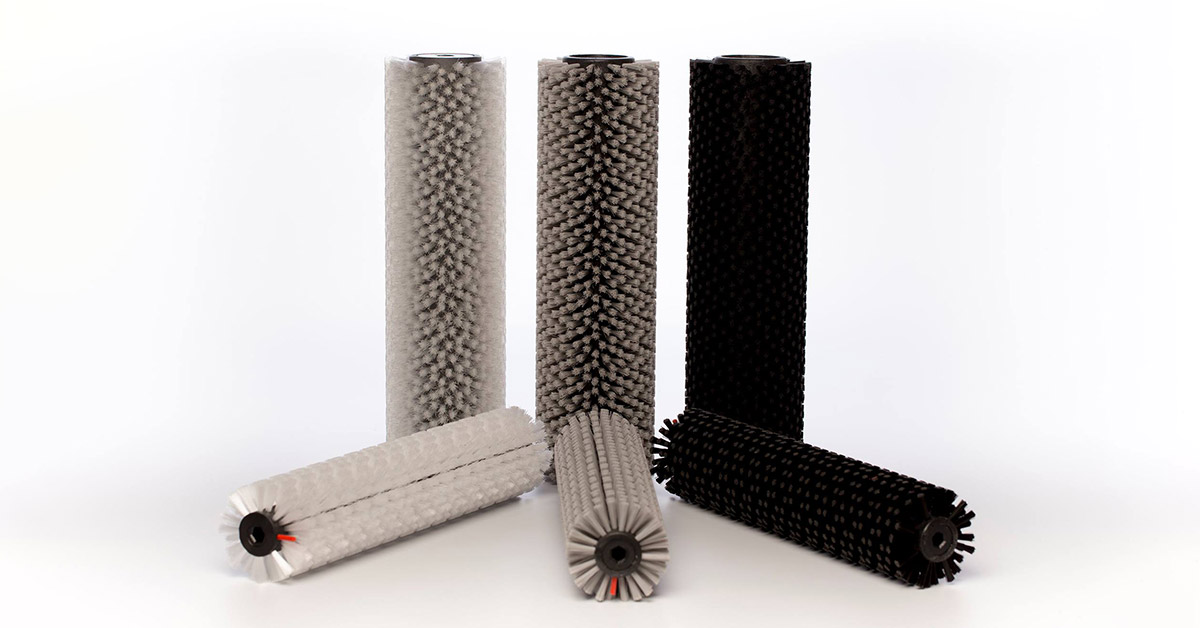Long-term care centers, which include nursing homes, assisted living facilities and continuing care retirement communities offer residents relaxing environments complete with dining halls, individual rooms or apartments, art education and music centers and more. Carpet is a staple within many of these facilities, as it is plush and comfortable, absorbs noise and is easier on the body in the event of a fall.
Keeping carpet clean is crucial, as carpet can be a direct reflection of the facility as a whole. Clean carpet makes residents proud to live in these environments and helps long-term care centers secure new residents who are looking for a place to call home.
The carpet care brushes you select can have a big impact on stain removal and carpet lifespan. Read on to learn more about the features to look for when buying brushes for carpet cleaning and why different types of brushes are necessary for different applications.
Carpet Cleaning Brush Features
Before discussing which situations call for specific types of brushes, it’s important to have an overall understanding of the features to look for when selecting carpet care brushes. The quality of your brushes is just as important as the effectiveness of your machine and your chemistry.
Carefully vet carpet cleaning brushes by considering the following elements:
- Composition – Polypropylene, a thermoplastic polymer, is resistant to fats and almost all organic solvents at room temperature. Brushes with a polypropylene core will offer impressive stability, balance and strength.
- Wet strength – Brushes are regularly exposed to moisture as they work chemistry into carpet fibers. It’s important that the bristles do not soften when wet. Again, polypropylene offers advantages, as unlike nylon, brush bristles made from this material will withstand moisture. Polypropylene also has a lower abrasion resistance and melting point to prevent wear and tear on nylon carpet fibers.
- Wear indication – Wear indicators make it easier than ever for machine operators to know when it is time to install new brushes. To check the wear, employees should remove the brushes from the machine when it is not in use. The wear indicator is a grouping of often bright colored bristles, such as red, and shows the minimum effective bristle length for cleaning. This allows users to compare the brush bristles to the indicator and replace brushes if there is a noticeable difference in bristle length.
- Color coding – Color-coded brushes help employees differentiate between various types of brushes. Whether they feature bright colors like blue, green and yellow or monochromatic shades of white, gray and black, color-coded brushes offer easy identification to further simplify carpet care. Plus, having several brushes on hand with varying bristle stiffness allows you to address different types of carpet throughout the facility.
- Lifespan – The lifespan is largely determined by the composition, but proper care is also important. Therefore, employees should regularly rotate brushes. Be sure to ask the manufacturer about the lifespan so you have a better idea of how often you’ll need to purchase new brushes. Some brushes can last roughly 1 million square feet, offering exceptional ROI.
Choosing a Brush for Carpet Cleaning
The brush you use will differ based on the application. Thankfully, color-coding makes it much easier to understand when and why to use a specific brush. You’ll want to make sure you have bristle options for the following scenarios:
- Delicate/natural fibers such as wool, staple cut or extra deep pile. These require a bristle that is less stiff to preserve the fibers. Regular cleaning is recommended.
- Synthetic fiber cut pile or commercial wool loop pile carpets. This bristle is slightly stiffer and regular cleaning with these brushes helps to remove embedded soils and stains.
- Commercial grade carpet, including level loop or low-cut pile. This type of carpet can withstand a stiffer bristle and frequent cleaning.
- Commercial synthetic carpet with loop pile. Brushes for this application should only be used for annual restorative cleaning, not regular use.
- Matted commercial grade low loop pile carpet. In this case, it’s important to discuss the process with the carpet manufacturer ahead of time and use the brush solely for one-time restorative cleaning.
Clean Carpet in Long-term Care Environments
Purchasing high-quality brushes and using them in the right situations will help long-term care facilities better maintain carpet over the long term. Residents and the family members and friends who visit them will appreciate that the facility prioritizes cleanliness from the ground up. Plus, clean carpet also helps attract new occupants, as it adds to the visual appeal during tours.
Whether your carpet care machine has two brushes or three, you’ll want to maximize the life of your brush bristles. Remember to regularly rotate the brushes. Employees can easily do so when they clean the carpet care machines after each use. Proper maintenance will protect your investment in your brushes and help you to achieve the cleanest looking carpet.

